Data on drinking tea is not rare, branch organisations often interview the general public on their tea habits and consumption (Dutch National coffee and tea survey, 2018). This may give us information about taste preferences, perceptions and consumption behaviour but it doesn’t give much insight into how the actual act of drinking tea is experienced as part of the lived, everyday experiences and contexts. The aim of this project is to change the everyday act of drinking tea into a insight experience. To be able to do this in a way which will be accepted and hopefully welcomed it should be grounded in the lived everyday tea practice of people who play an active role in today’s busy society. The main goal of the interviews was to gain insight into the embodied aspects of the way in which the participants usually prepare and drink tea.
People, activity, context and embodiment
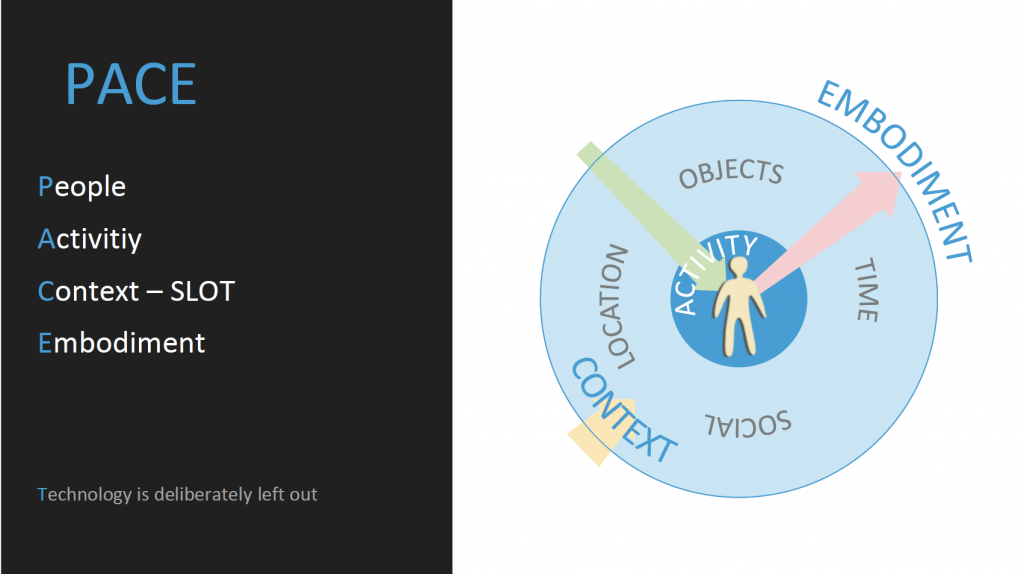
The PACT (People, Activity, Context, Technology) framework is a common approach for designing human-centred interactive systems. It starts from the idea that if technology changes it will change the activities people perform in a certain context. Hugo van Roy (CMD Avans) has iterated on this framework and intentionally left out technology and replaced it with embodiment (Fig. 1). This encompasses the whole of the context, activity and the individual. As a designer/ethnographer we look from the individual towards the embodiment. In this adjusted model one tries to describe the embodied experience from feelings, associations, actions, goals, etc. By dissecting the experience and linking it to the context and inner experience one may analyse how the embodied experience is structured. Depending on the meaning people attach to an experience the designer may then change the context and activity and through that the entire (embodied) experience.
From embodiment to enlightenment
The ultimate aim of Magic tea is to generate (or at least invite) an insight experience during everyday life. Insight is usually acquired over many years and involves a set of mind states which are called the seven aspects of enlightenment. These include: attention, interest, joy, calm and concentration. The PACE model is useful for either filling the gaps or to enhance useful mind states and emotions already present. Basing the interviews on this model could also generate knowledge on how the tea practice is embedded in daily life and what circumstances may create the most fertile opportunities for a Magic Tea intervention.
Method
Six semi-structured interviews were conducted with 1 male and 5 females between the ages of 19 and 52. As a basis for these interviews the four context domains were used:
- Time (e.g. Do you drink tea on set times?)
- Social (e.g. Do you mostly drink tea alone or in company?)
- Objects (e.g. What objects to you use for making and drinking tea? Including the type of tea)
- Location (e.g. What differences do you experience when drinking tea at different locations?)
- Cognition and emotion were added to take into account things like associations, sensory experiences, memories.
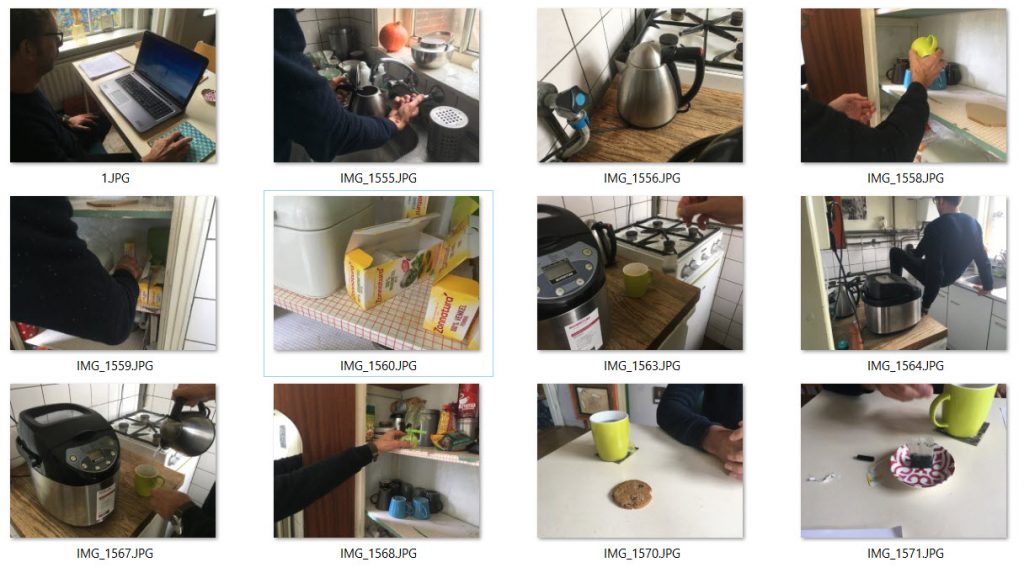
Before the start of the interview participants were asked to make and drink tea the way they would do usually. This process was observed (pictures of this process were taken for 3 participants, Fig. 2).
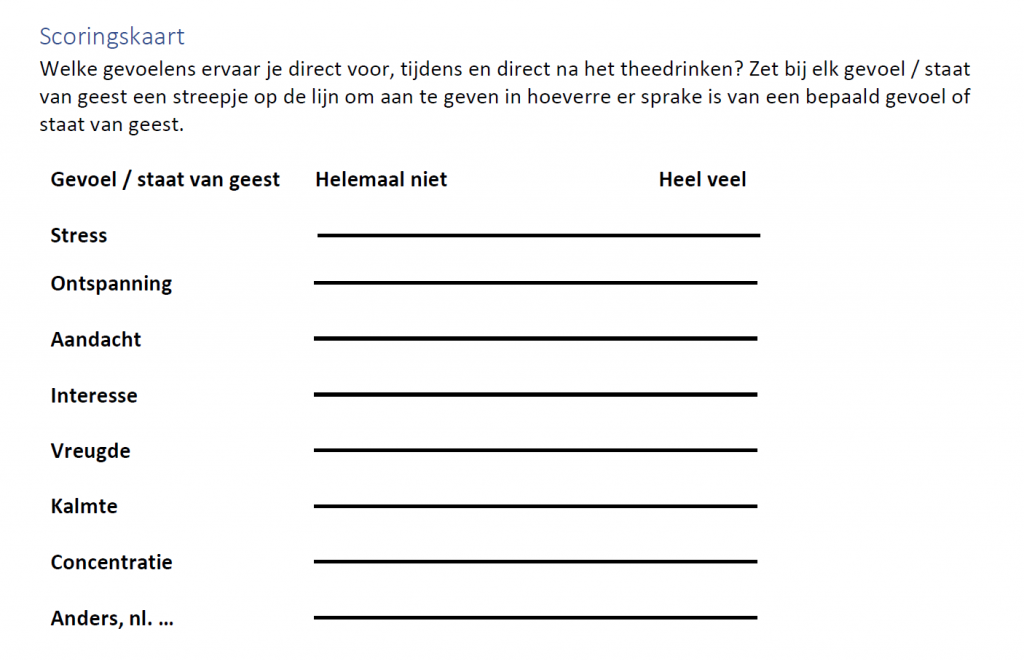
At the end of the interview participants were asked to fill in a Visual Analoge Scale (VAS) (Fig. 3) containing 5 factors of enlightenment and and the amount of stress and relaxation they felt during their favourite tea moment.
Results
The interviews were annotated using a different colour for every domain. The annotated notes were transferred to an Excel sheet for easy access and comparison. Input from the cognition and emotion domain was processed using word counting. From this list 17 main themes surfaced. The most relevant findings were translated into three data visualisations.
PACE findings
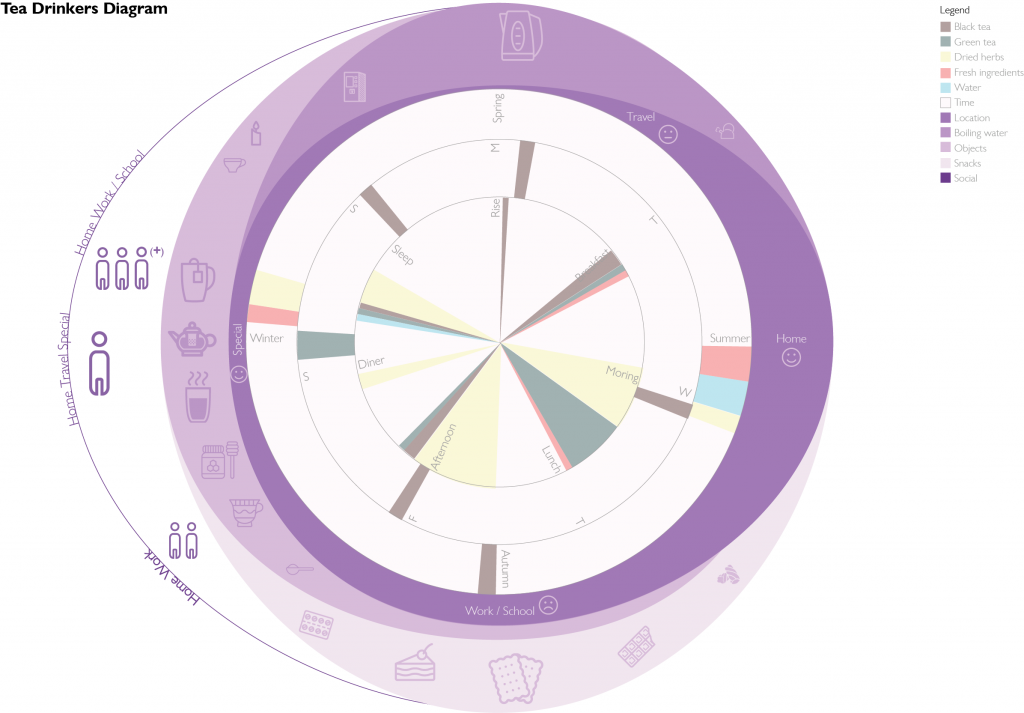
Fig. 4 shows the main findings from the interviews with regards to time, location, objects, cognition and emotion and the social aspect of drinking tea. Most participants drink tea in the morning, mid afternoon and before going to bed. The preferred location is at home using they own teas and utensils. Drinking tea at work or school is considered a less pleasant experience. People drink mostly herbal tea (dry herbs and mixtures) followed by green and black tea. When making tea people find convenience very important: they use tea bags and water cookers to speed up the process. People often drink alone but do enjoy drinking together with family and friends. A sweet to go with the tea is appreciated.
VAS outcomes
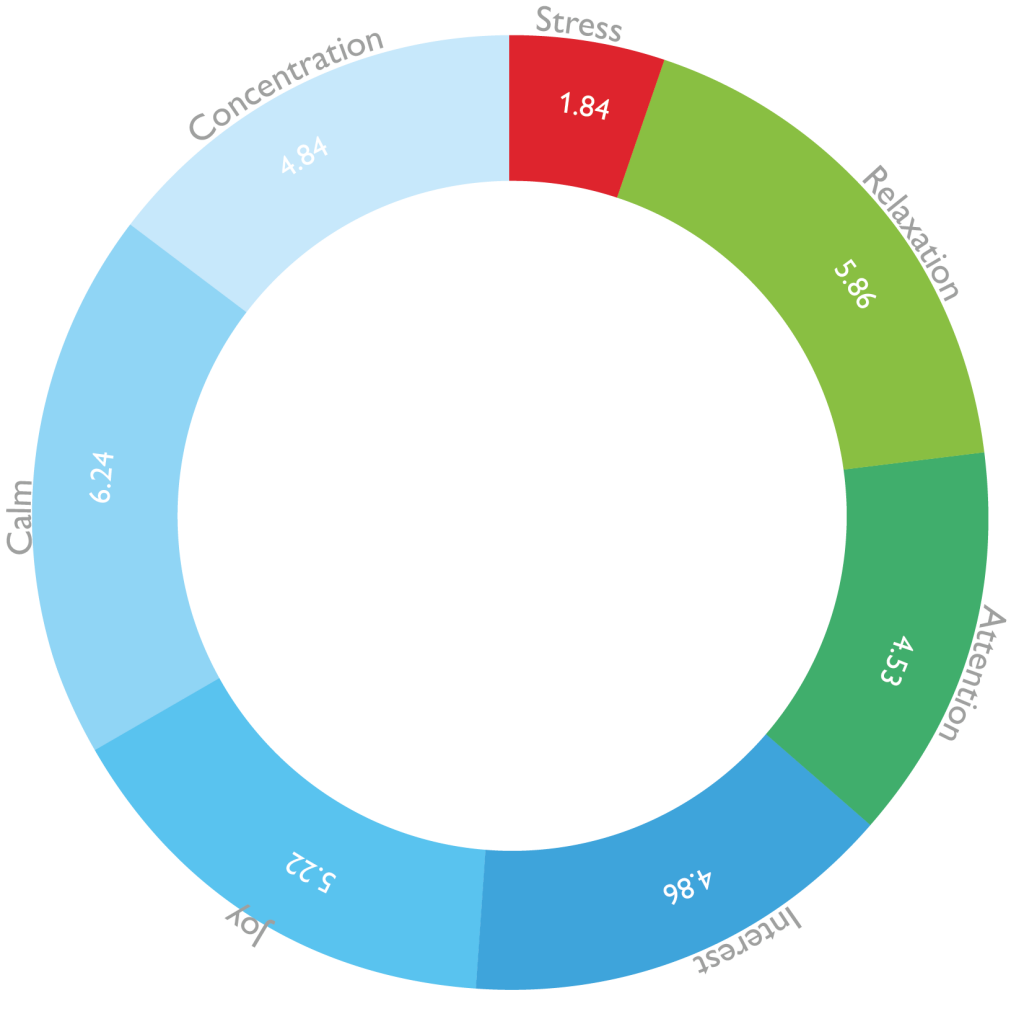
Five participants filled in the VAS. Participants could score up to 7.5 on the mind state aspects of the scale. When imagining they favoured tea moment stress is very low. People find drinking tea calming (6.24) and relaxing (5.86). To a lesser extent it sparks attention, interest and concentration and is also associated with feelings of joy.
Interview themes
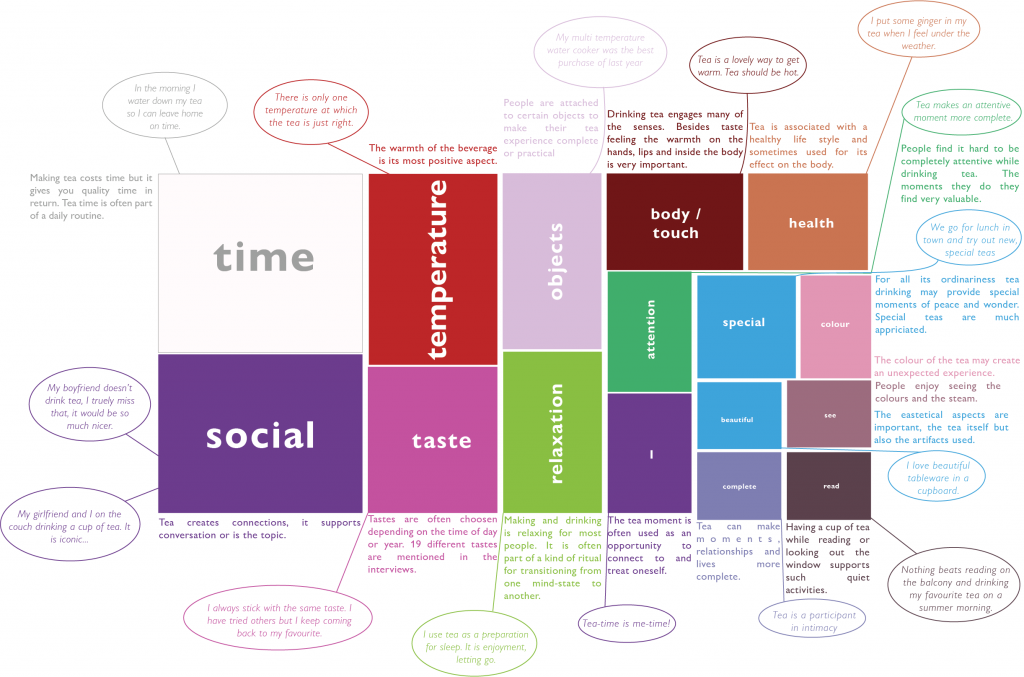
The time aspect is very important in the whole tea ritual. People use it, or want to use it to structure their day, it slows them down and sometimes they have to speed up the process in order to be on time. A lot of enjoyment and satisfaction comes from teas’ ability to support connections. Be it with others or a (quiet) part of oneself. Participants also enjoyed the way all the senses are involved in making and drinking tea. It is often beautiful (colours, table ware) and pleasant (warmth, taste). Tea is associated with health and sometimes used for cleansing purposes. Tea is often mentioned as something which extends the good things already present (company, beauty, seasons, peacefulness.)
Conclusion
Drinking tea is about much more than quenching a thirst. It is a way for people to structure their lives and create meaningful and pleasant moments. Drinking tea connects people to what they value: their friendships, health, inner peace or taking care of themselves. Drinking tea creates pleasant bodily sensations. People enjoy the warmth, taste and colour. Tea supports quiet activities like reading or just staring out the window. It can also comfort and relax. All those qualities make tea a good candidate for an everyday activity which may lead to a transcendent experience. This is underlined by Fig. 5 which shows that stress is low and factors of enlightenment are present, especially calm and relaxation.
Thanks to: Wendy Lafarre & Pietertje Westerink, Paul Neervoort, Hugo van Roy. In collaboration with: Avans University of Applied Sciences, Centre of Applied Research for Art, Design and Technology (CARADT)